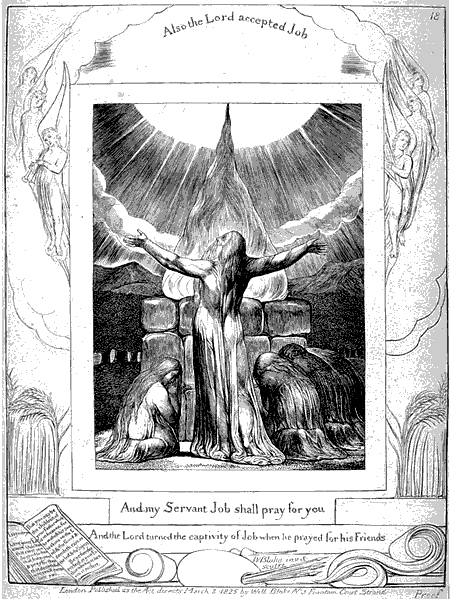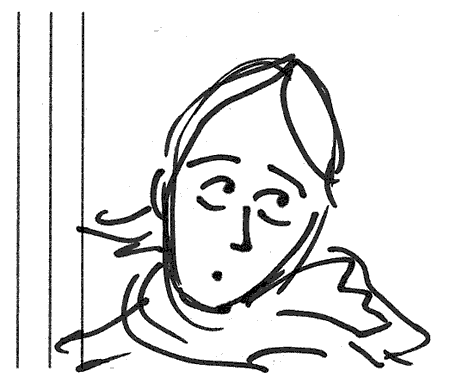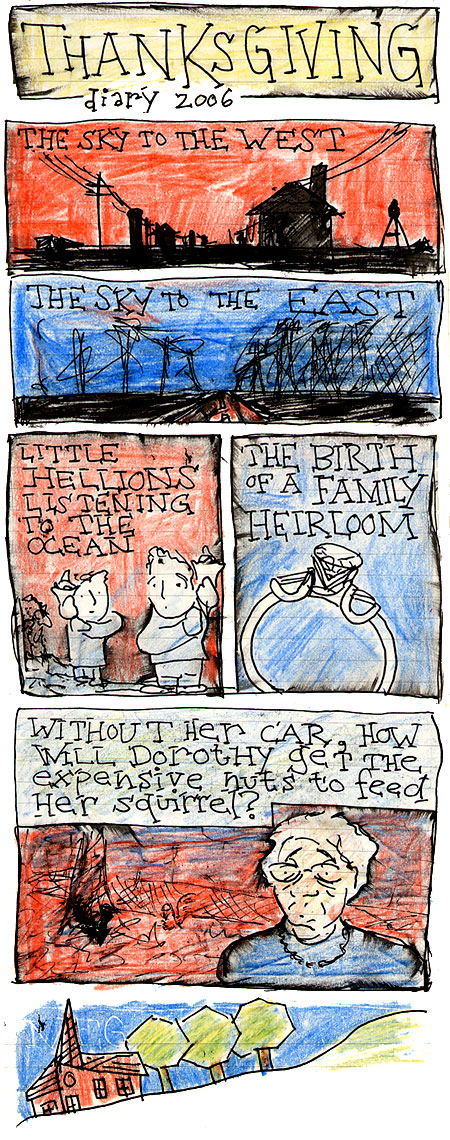Couldn’t sleep last night, so I kept reading my biography of William Blake. Got to thinking about apprenticeships (Blake was apprenticed to an engraver for 7 years — from the ages of 14 to 21) versus the kind of classroom teaching most of us get these days.
I’ve never had my eye out for teachers, I’ve always been on the lookout for mentors: people with skills that I want, people living a kind of lifestyle that appeals to me. People I can emulate. Like an apprentice would emulate his master (and then, of course, move past him…)
Then this afternoon I was talking to my boss about Deadwood, and I remembered an old New Yorker article about David Milch (Deadwood, NYPD Blue creator) and his relationship with his mentor, Robert Penn Warren. It seems like such a perfect example of this kind of setup:
At Yale, Robert Penn Warren taught an oversubscribed fiction-writing seminar. As a junior, Milch followed him around for days before slipping under his office door a chapter of his novel in progress, a narrative of four days in the life of a family in Buffalo whose teen-age son has died in a car accident. The previous year, after his best friend was killed in a car accident, Milch had gone home for the funeral but should have stayed away; he spent the entire time uselessly drunk. The novel was, among other things, a gesture of expiation. Warren’s seminar sessions consisted mainly of him reading aloud. Milch always sat in a corner, in thrall and saying almost nothing. Then, one evening, in what he remembers as “a pure act of stupidity, selfishness, and juvenile behavior,” he brought a finished chapter to Warren at home, interrupting his dinner, and asked him to read it on the spot.
“He looked at me and said, ‘Well, you act like a writer’-meaning, no manners,” Milch recalled. “And he read it, and it was good and he was very good about it. Then I said, ‘You know, I don’t know if I want to write anymore.’ To make him really come out and say-who knows, whatever-because he’d already told me, ‘No one writes dialogue better than you.’ Now, I’ve interrupted his dinner, he’s been very gracious, and I say that, and he looks me in the eye and says, ‘Understand, David. I don’t give a shit who writes and who doesn’t.’ In other words: If you, David, are soliciting from me ‘Oh, you must,’ I ain’t gonna say that, because that’s up to you.
“Mr. Warren maintained certain disciplines that were in a way the best lessons he gave to me. As a model, he was crucially important. He and I stayed close pretty much all the way through. He sent me copies of the rough drafts of his poems, and we would sit down and he would tell me what he was trying to do. When he was dying, he asked me to come see him, which I did, and I find, as is the case with a really good teacher, even now I will suddenly understand something that he was trying to teach me back then about an approach to a poem.”
After his long struggle with addiction, Milch then turned to teaching as a kind of redemptive act:
In the fall of 2001, three hundred people turned out on six consecutive Tuesdays at the headquarters of the Writers Guild, in Beverly Hills, where Milch had rented an auditorium to offer a free course in screenwriting. Each class session was, for the most part, a two-hour monologue-Milch being alternately funny and evangelical about writing, doing what he could to demystify the process. The homework assignments were bound by strict ground rules: write every day, for not less than twenty or more than fifty minutes, a scene with only two voices and no other narrative description; “Don’t think about what it means, don’t think about who they are”; and, above all, “Don’t think about what you’re going to write before you do it.”
…In the first of his lectures at the Writers Guild, Milch said, “No one can teach you anything that you don’t already know. And each of you has, in your heart, the capacity, when encouraged by a benign organizing presence, to identify the deepest truths of the human story.”
After reading the transcripts of the lectures, I raised with Milch the notion that for him the imperative to teach-he met one-on-one with every student-was an inevitable corollary to his belief that the act of writing should be “a going out in spirit.”
“Absolutely true,” he agreed. “And the one thing I can guarantee is that the person who will really benefit from the teaching is unidentifiable. And it might not become apparent until five years from now, or whenever, because the seed has to germinate. A person could look at me through ninety-five per cent of my experience and know that I had no shot. Because I was so unreliable. The only thing you could rely on me for was to betray you. The old saying is I’d steal your dope and then help you look for it. So whenever anyone asks me for help, I always try to say yes, because you know how they say, ‘Coincidence is God’s way of staying anonymous.’ “
I guess it’s in this way that I’ve always thought of a certain type of teaching relationship as a weird, parent/child-like exchange: someone teaches you something, you teach it to someone else — that way, a certain part of you lives on, no matter what.
A little half-baked, but that’s what you get on a Friday night.



